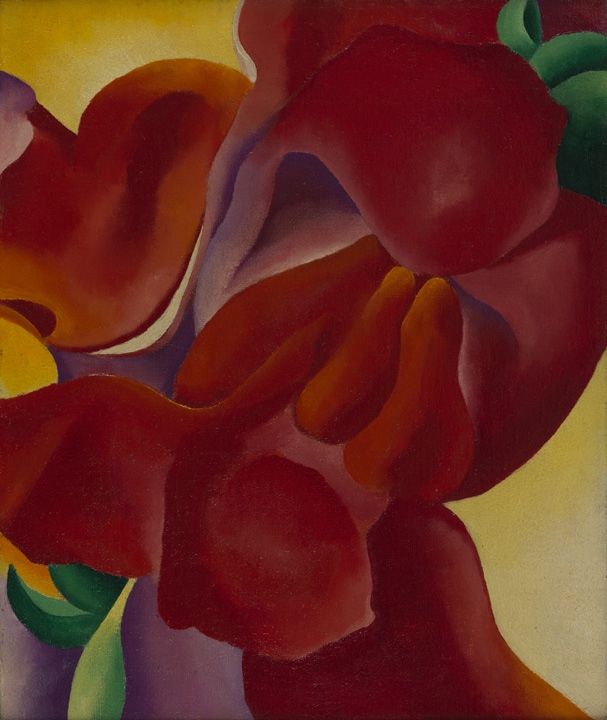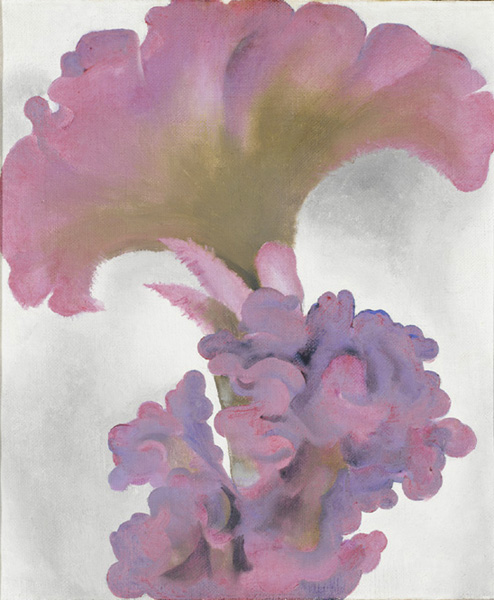
Red Canna
Georgia O'Keeffe
Noted for her sensual abstractions of flowers and southwestern motifs, O'Keeffe is one of the most recognized twentieth-century American artists. Raised in a family that stressed education of women, O'Keeffe attended the Art Institute of Chicago before going to New York to study at the Art Students League. After working as a commercial artist, she accepted a teaching position at Columbia College in South Carolina. In 1916 her paintings came to the attention of Alfred Stieglitz, whose gallery was a venue for European and American avant-garde art, featuring artists such as Marcel Duchamp, Francis Picabia, Arthur Dove, and Marsden Hartley. Stieglitz's gallery hosted O'Keeffe's first solo show, and he became her most vigorous promoter until his death in 1946. O'Keeffe and Stieglitz married in 1924.
"Red Canna" is among the earliest of her enlarged, abstracted flower paintings and, despite its small size, demonstrates her interest in imbuing natural phenomena with monumental impact. O'Keeffe loved gardening and was often inspired by a specific flower that she then painted in a consistent color through a series of a dozen or more paintings. In these extreme close-ups she established a new kind of modern still life with no references to atmospheric effects or realistic details, reflecting her statement,"I paint because color is significant."
Artist
Date of Birth
(1887-1986)
Date
1923
Medium
Oil on canvas
Dimensions
12 x 9 7/8 in. (30.48 x 25.0825 cm.)
Accession #
2003.1.8
Credit Line
The Vivian O. and Meyer P. Potamkin Collection, Bequest of Vivian O. Potamkin
Copyright
© Georgia O'Keeffe Museum / Artists Rights Society (ARS), New York
Category
Subject
Collection
We're so excited you're planning to visit PAFA!
Make time for art — visit us Thursday to Sunday.
Before reserving your tickets, please review helpful information about museum hours, accessibility, building access, and special admission programs.
If you have any questions, feel free to reach out to us at visitorservices@pafa.org — we’d love to help!
